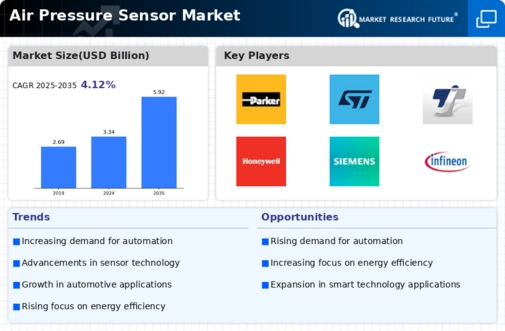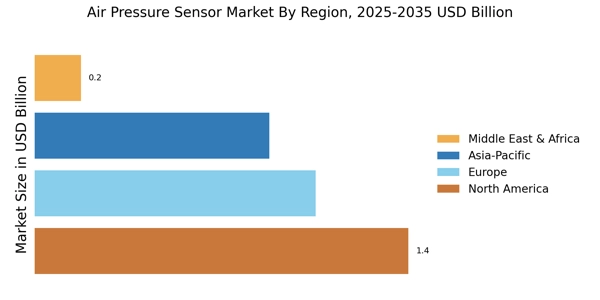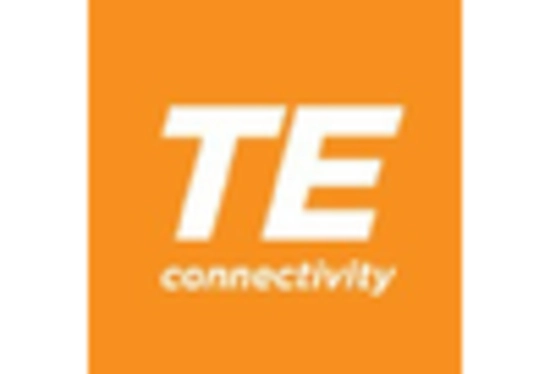Rising Demand for Automation
The increasing trend towards automation across various industries appears to be a significant driver for the Air Pressure Sensor Market. As industries strive for enhanced efficiency and reduced operational costs, the integration of air pressure sensors into automated systems becomes essential. These sensors facilitate precise monitoring and control of air pressure, which is crucial in manufacturing processes, HVAC systems, and robotics. According to recent data, the automation sector is projected to grow at a compound annual growth rate of over 10% in the coming years, thereby potentially boosting the demand for air pressure sensors. This trend indicates a robust market opportunity for manufacturers and suppliers within the Air Pressure Sensor Market.
Advancements in Sensor Technology
Technological advancements in sensor technology are poised to propel the Air Pressure Sensor Market forward. Innovations such as miniaturization, enhanced accuracy, and wireless capabilities are making air pressure sensors more versatile and applicable across various sectors. These advancements enable the development of smart sensors that can integrate seamlessly with IoT devices, enhancing data collection and analysis. The market for smart sensors is anticipated to grow significantly, with projections indicating a potential increase of over 15% in the next few years. This evolution in sensor technology suggests a promising future for the Air Pressure Sensor Market, as it adapts to meet the needs of modern applications.
Expansion of the Aerospace Sector
The aerospace sector's expansion is likely to contribute significantly to the growth of the Air Pressure Sensor Market. With the increasing number of air travel passengers and the demand for more fuel-efficient aircraft, manufacturers are focusing on advanced technologies that enhance safety and performance. Air pressure sensors play a critical role in aircraft systems, providing vital data for altitude measurement and cabin pressure control. The aerospace industry is expected to witness a growth rate of approximately 5% annually, which suggests a corresponding rise in the need for reliable air pressure sensors. This trend underscores the importance of the Air Pressure Sensor Market in supporting the aerospace sector's advancements.
Growing Environmental Regulations
The implementation of stringent environmental regulations across various sectors is driving the demand for the Air Pressure Sensor Market. Industries are increasingly required to monitor and control emissions, which necessitates the use of air pressure sensors for accurate data collection and compliance. For instance, regulations concerning air quality and emissions in manufacturing and automotive sectors are becoming more rigorous, compelling companies to adopt advanced monitoring technologies. The market for air pressure sensors is projected to grow as industries seek to meet these regulatory requirements, indicating a strong correlation between environmental policies and the Air Pressure Sensor Market.
Increasing Focus on Energy Efficiency
The growing emphasis on energy efficiency in industrial processes is likely to drive the Air Pressure Sensor Market. Companies are increasingly adopting technologies that optimize energy consumption, and air pressure sensors are integral to these efforts. By providing real-time data on pressure levels, these sensors enable better control of systems such as HVAC and pneumatic equipment, leading to reduced energy waste. The energy efficiency market is projected to expand at a rate of approximately 8% annually, which may correlate with an increased demand for air pressure sensors. This trend highlights the critical role of the Air Pressure Sensor Market in supporting energy-efficient initiatives.

















Leave a Comment